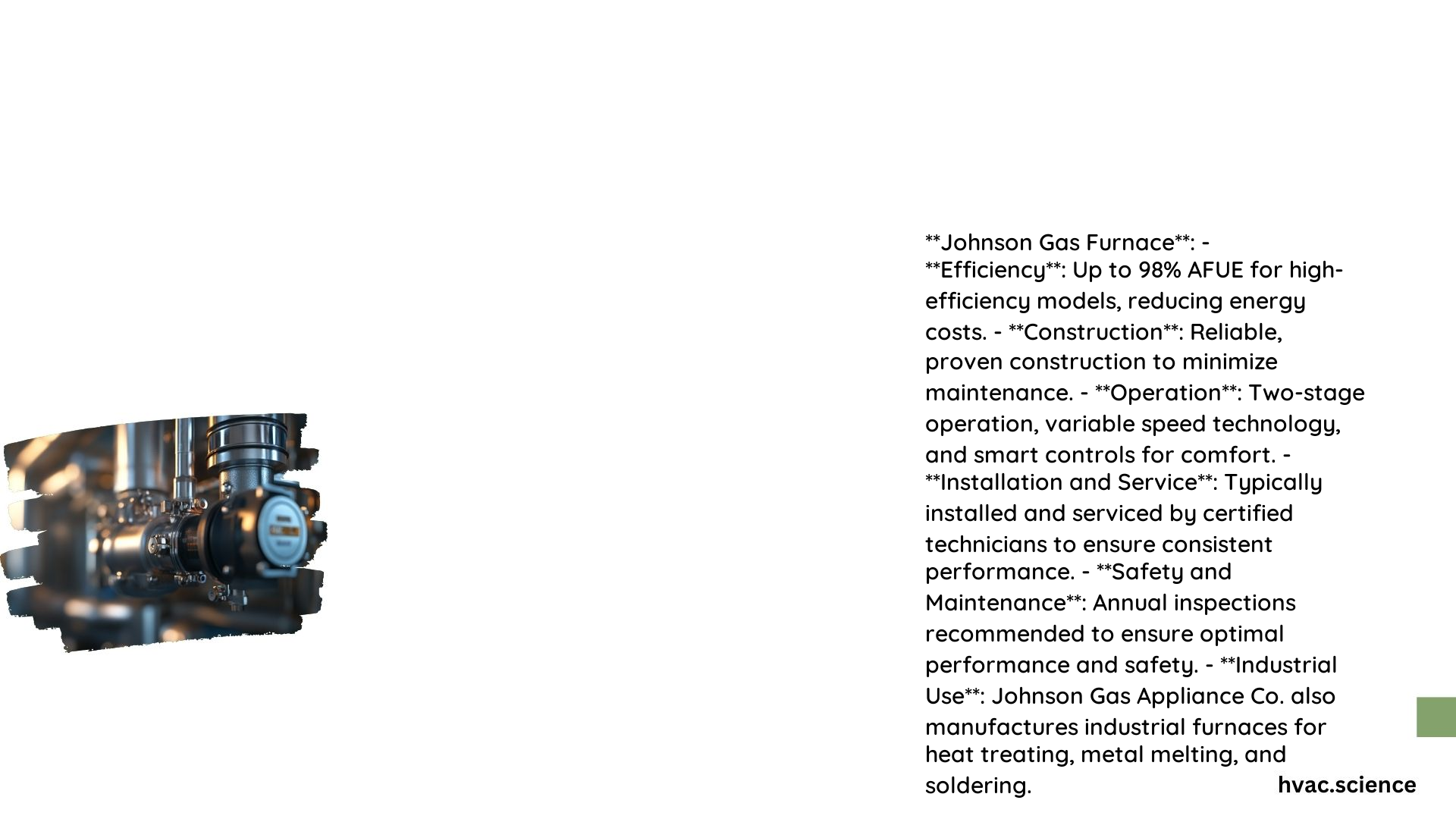What are the Pros and Cons of a Single-Stage Johnson Gas Furnace?
A single-stage Johnson gas furnace is a popular choice for homeowners due to its affordability and energy efficiency. However, it’s essential to understand the pros and cons of this type of furnace to make an informed decision.
Pros of a Single-Stage Johnson Gas Furnace
- Least Expensive: Single-stage furnaces are the most affordable option upfront, making them a good choice for immediate replacements or for smaller homes.
- Savings on Heating Bills: Despite running at full capacity, modern single-stage furnaces can still offer some savings on heating bills compared to older models.
- Energy-Efficient: While not as efficient as multi-stage models, single-stage furnaces are still energy-efficient, especially when compared to older furnaces. However, their efficiency is generally lower, typically ranging from 80% to 90% AFUE (Annual Fuel Utilization Efficiency).
Cons of a Single-Stage Johnson Gas Furnace
- Always Running at Total Capacity: Single-stage furnaces run at full power whenever they are on, which can lead to higher energy bills and less even heating.
- Noisy: These furnaces tend to be noisier due to their constant full-power operation.
- Hot and Cold Spots: Because they run at full capacity and then shut off, single-stage furnaces can create hot and cold spots in the home, leading to uneven heating.
Comparison to Multi-Stage Models
- Two-Stage Furnaces: These furnaces offer better energy efficiency and more even heating by operating at two different power levels. They are quieter and can adapt to different heating needs, but they are more expensive upfront.
- Modulation System: This system provides the most precise temperature control by continuously adjusting the gas flow and blower speed. It is the most efficient and comfortable option but also the most expensive.
How Does the Modulation System of a Johnson Gas Furnace Work?

The modulation system in a Johnson gas furnace is designed to provide optimal temperature control and energy efficiency. This advanced system automatically adjusts the energy used to maintain a constant optimal temperature.
Functionality of the Modulation System
- Automatic Adjustment: The modulation system automatically adjusts the gas flow and blower speed to match the heating demand, ensuring that the furnace uses only the necessary amount of energy.
- Components:
- Modulating Gas Valves: These valves can adjust the gas flow to match the heating demand, ensuring that the furnace uses only the necessary amount of energy.
- Variable-Speed Blowers: These blowers can adjust their speed to distribute heat evenly throughout the home, reducing temperature fluctuations.
- Temperature Control: The system continuously monitors the temperature and adjusts the gas flow and blower speed to maintain a consistent temperature. This results in optimal comfort and energy efficiency.
What Maintenance Tasks are Required for a Johnson Gas Furnace?
Proper maintenance is crucial for ensuring the longevity and efficiency of your Johnson gas furnace. Here’s a detailed maintenance schedule to keep your furnace running at its best.
Monthly Maintenance Tasks
- Filter Changes: Replace the air filter every month to ensure proper airflow and efficiency. Use a high-quality filter that matches the furnace’s specifications.
- Visual Inspection: Check for any signs of wear, leaks, or damage to the furnace and its components.
Annual Maintenance Tasks
- Professional Inspection: Hire a licensed HVAC technician to perform a comprehensive inspection, including cleaning the furnace, checking for gas leaks, and ensuring all components are functioning correctly.
- Thermostat Calibration: Ensure the thermostat is calibrated correctly to maintain optimal temperatures and efficiency.
Seasonal Maintenance Tasks
- Vent Cleaning: Clean the venting system to ensure proper gas flow and to prevent carbon monoxide buildup.
- Blower Motor Maintenance: Check and clean the blower motor to ensure it operates efficiently.
Necessary Tools and Costs
- Tools: Basic tools such as a screwdriver, wrench, and vacuum cleaner. For more complex tasks, a professional technician will have the necessary equipment.
- Costs: Filter replacements can cost between $10 to $50 depending on the quality and type. Annual inspections by a professional can range from $50 to $150. Any repairs or replacements of parts will depend on the specific issue and the cost of the parts and labor.
Recommended Products or Materials
- High-Quality Filters: Use filters with a high MERV rating to ensure better air quality and furnace efficiency.
- Licensed Technicians: Always hire licensed and experienced HVAC technicians for inspections and repairs to ensure quality workmanship.
